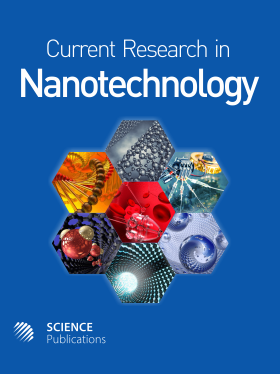Natural Sensitizer for Dye-Sensitized Solar Cells Using Three Layers of Photoelectrode Thin Films with a Schottky Barrier
- 1 National Taipei University of Technology, China
- 2 National Taiwan Normal University, Taiwan
- 3 Texas A and M University, United States
Abstract
Problem statement: This study combines Au nanoparticles with TiO2 nanoparticles to form a Schottky barrier and applies it to the photoelectrode thin film of Dye-Sensitized Solar cells (DSSCs). Approach: First, commercial TiO2 powder (Degussa P25) was put into the alkaline solution to prepare TiO nanotubes (Tnt) by a hydrothermal process. Tnt were sintered at 550° to obtain TntC550 particles and fabricated into a translucent sol by two hydrothermal treatments and baked at 180° to acquire H180 particles. H180 and TntC550 were spread into transparent polymer films by a doctor blade. H180 serves as the first layer and TntC550 the second, with both were sintered at 450°. The third layer uses hydrogen tetrachloroautate (HAuCl4) and trisodium citrate (C6H5Na3O7) to prepare Au nanoparticles by salt reduction. Natural dyes of bougainvillea leaves for chlorophyll and blueberries for anthocyanin were employed in this study. Extracted chlorophyll and anthocyanin dyes were also blended in the proportion of 1: 1 as a mixed dye and these three different natural dyes were compared to compare their photoelectric conversion efficiencies. Electrolyte and counter electrode (Pt) were added to form the sandwich structure of DSSCs. After being sealed, DSSCs were tasted for fill factor, photoelectric conversion efficiency and incident photon-to-current conversion efficiency. Results: Spherical Au nanoparticles around 27nm were adhered to the TntC550 make a film by self-assembly to complete the preparation of the third of photoelectrode thin film of DSSCs. Results from the experimental tests show that for the dye mixtures, photoelectric conversion efficiency of DSSCs in this study can reach 0.75% with the VOC of 0.56 V and JSC of 2.93 mA/cm2 and FF of 0.47. Conclusion: It can be seen from the current density logarithm and voltage diagram that the prepared Au nanoparticles produce Schottky barriers on the surface of TiO2. Due to the Schottky barrier, electrons were unable to go back to the dye molecules or electrolyte, thus effectively enhancing the electronic conversion efficiency.
DOI: https://doi.org/10.3844/ajnsp.2010.13.22

- 4,622 Views
- 2,999 Downloads
- 4 Citations
Download
Keywords
- Dye-Sensitized Solar Cells (DSSCs)
- TiO2 nanoparticles
- natural dye
- conversion efficiency
- TiO nanotubes
